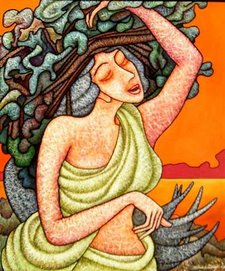THE HIPPODROME
THE EGYPTIAN OBELISK (THE OBELISK OF THEODOSIUS I)
Around 1490 BC the Egyptian Pharaoh Thutmose III erected two obelisks before the Karnak temple in Luxor to commemorate the victories of his forces in Mesopotamia. The obelisks were made of rare pink granite.
In the 4th century AD, an unknown Roman emperor who wanted to accomplish something impressive that would create excitement among his people had the colossal obelisk brought to Istanbul.
For years it was left lying in a corner of the Hippodrome. In 390, during the reign of Theodosius I, it was erected with great difficulty by Proclus, a city administrator. It is the oldest monument in the city and has always been considered magical.
The obelisk rests on four bronze blocks on a Roman base decorated with reliefs. These depict the emperor, his children and other prominent personalities watching the races from the imperial box, as well as the spectators, musicians, dancers and chariot races. The obelisk measures 25.60 m including the base.
THE WALLED OBELISK
Built of roughly cut stones, this imitation obelisk stands at the southern side of the Hippodrome. Its exact date of construction is unknown. It is named after the Emperor Constantine Porphyroenitus who had it repaired in the 10th century. Its bronze plates decorated with golden lettering were plundered by the Fourth Crusaders.
THE SERPENT COLUMN
This is one of the oldest monuments in Istanbul. The heads of the three intertwined serpents used to form the legs of a gold cauldron. The thirty-one Greek cities, which defeated the Persians in 5th century, BC melted the bronze items they had captured to create this unique monument. The 8-meter high column originally stood before the Temple of Apollo in Delphi. It was brought to Istanbul in 324 by Constantine and erected in the middle of the Hippodrome. The heads of the serpents, intact until 1700, disappeared at that time. One of the missing heads was later found and it is now on display at the Archeological Museum.
THE GERMAN FOUNTAIN
The octagonal, domed fountain at the entrance to the Hippodrome was a present from the German Emperor Wilhelm II to Sultan Abdulhamid II and the city of Istanbul. It was built in Germany and installed in Istanbul in 1898. Built in a neo-Byzantine style, the fountain is decorated with gold mosaics inside. It is a beautiful fountain, but does not blend well with the ancient monuments in the vicinity.
Subscribe to:
Post Comments (Atom)



No comments:
Post a Comment